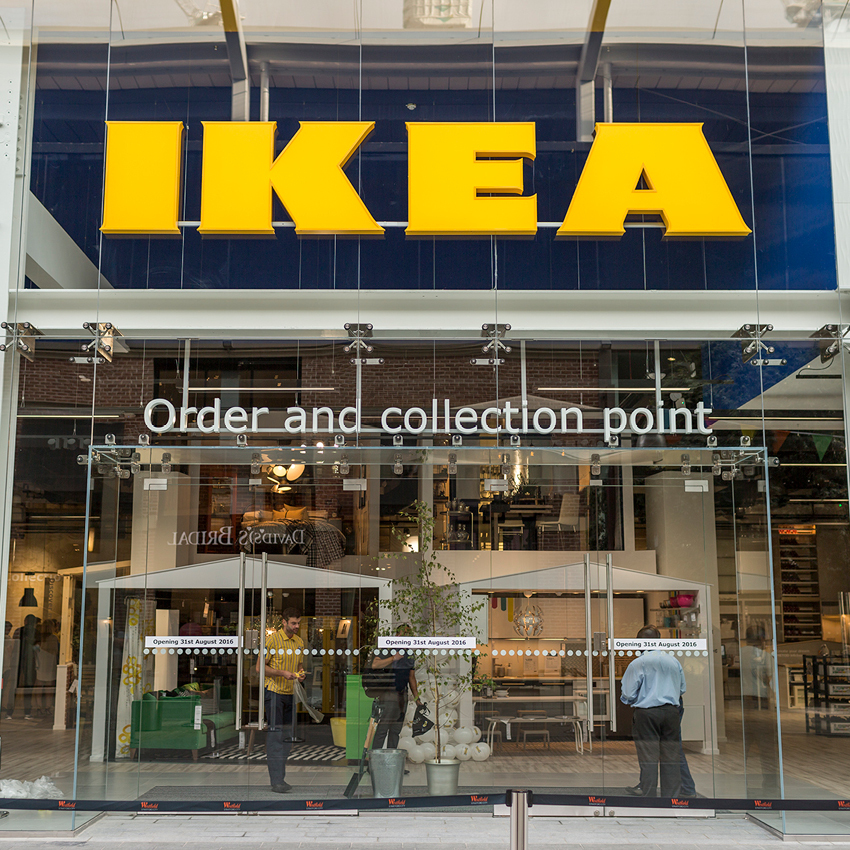If you continue to think of Ikea as that Swedish — or is it Finnish? — retailer with those humungous stores on the outskirts of town, lightweight furniture with funny names that is often difficult to put together…and the home to tasty little meatballs, you might want to rethink that opinion.
Swedish Export
Over the past several years the Swedish retailer — and yes, they are from Sweden — has undergone a remarkable transformation that has put it in the forefront of not only progressive retailing but also progressive thinking when it comes to the environment, marketing and dealing with an ever-changing consumer base. In doing so they may be the most underrated — if not the most overlooked — retailer not just in America, but in the world.
[callout]Retailers, both in and out of the home furnishings sector, who ignore how Ikea is changing and don’t learn a few new retailing tricks from them, will do so at their own peril.[/callout]
This is clearly not your college student\’s Ikea anymore. Ikea, with global sales approaching $50 billion from its nearly 450 stores and 50 e-commerce sites in just over 50 countries, has long been the world\’s largest retailer of home furnishings. And even though it gets the bulk of its revenues from its European home base, it has continued to grow business both here in the U.S. and in China. As such, it is one of the few retailing companies on the planet that has been successful on multiple continents.
Up until recently, it adhered to a very tried and true format: very big stores, little online sales, low-key marketing and a product line geared towards budget consumers like college students, first-time renters and others looking for a cheap — and often temporary — solution for their furnishings needs. And that formula worked for a long time. Since entering the North American market with its first store just outside of King of Prussia, PA in 1985 it has grown its U.S. presence to 52 locations doing $4.7 billion in annual revenue. All were giant warehouse-sized sites featuring maze-like showrooms, market areas with smaller home décor merchandise, sky-high industrial shelving for do-it-yourself inventory picking and, oh, those ubiquitous Swedish meatballs waiting for you at the end of your shopping journey.
Not Just Warehouses Anymore
The meatballs are still there but the physical footprint of Ikea is changing rapidly. First in Europe but more recently in America, it has opened a variety of formats in several different sizes.
- First came the in-town design centers and pick-up stations, including the initial one in Manhattan last year. At about 5,000-square-feet they serve as points of entry for the Ikea shopper looking for serious shopping and home renovation projects like new kitchens and bathrooms. They also serve as stations where orders can be picked up that were previously bought online or at the traditional stores outside of town. There may eventually be hundreds of these in-town smaller stores the company says.
- This year, this format was supplemented by what, for a lack of a better term, might be called Ikea light. It\’s a 100,000-square-foot store that has an edited down assortment compared to the legacy stores that are five times their size. Only Ikea could have a 100,000-square-foot store and call it small. The first of these opened in Queens, NY in January, further cementing the New York market as key for its American operations.
This three-tier structure is the model going forward, Javier Quinones, president and chief sustainability officer of Ikea Retail U.S., told me in a recent interview. He said Ikea has targeted four other cities besides New York: Los Angeles, San Francisco, Chicago and the District of Columbia. Each will get at least one of all three formats in the next three years. The big stores will not disappear, he said, \”they will continue to play a key role in offering the complete Ikea experience. We now have three different formats depending on what the customer wants, and every customer will have an Ikea touchpoint within 20 minutes of where they are. But we don\’t talk about multi-channel, it\’s all one channel.\”
How Do You Say E-Commerce in Swedish?
For much of its existence Ikea was a laggard in the online side of the business, something it admits was not a priority up until recently. Obviously Covid has stepped up the effort to develop its online presence. Before the pandemic hit e-comm accounted for about 15 percent of its total U.S. business. Now that figure is up to 25 percent and Quinones said it could eventually be half of Ikea\’s overall U.S. sales \”but it will take time.\”
In the meantime, it has moved on a number of fronts to be more online savvy. It has introduced a transactional app and just developed a virtual escape room that is placed on Snapchat. Ikea is also stepping up its initiatives in the field of AI. Barbara Martin Coppol, chief digital officer for the entire company said in an interview last year with the British website Verdict. \”Very soon we will give to people digitally the possibility of designing your home in photographic quality 3D from the comfort of your couch in a very simple way. So, you take a picture of your interior, and we will be able to swap in and out different furniture that you choose in order to really visualize how it will fit.
All of that is part of new experiences online, and I think it\’s really important to continue doing that.\”
Sustaining Sustainability
Perhaps the most remarkable transformation coming out of Ikea is its attention to the environment and creating sustainable products. The company in Swedish tradition has always been green thinking but its low-budget furnishings often were not designed for generations of use. That really hasn\’t changed but it has learned to address environmental issues nonetheless.
\”Covid put sustainability at the top of our agenda,\” Quinones said, giving some rather impressive statistics to back up that claim: 240,000 solar panels, over 100 wind turbines, 125 electric vehicle recharging stations, a new policy to only sell rechargeable household batteries and a program to go completely LED in its lighting in the next five to six years. It has bought forest land, including a recent purchase in the state of Georgia, that will be set aside as nature preserves to replace trees it has cut for its products and it\’s even begun selling a meatless version of those famous Swedish meatballs.
These initiatives come as what he sees as a seminal change in consumer attitudes about sustainability and eco-awareness. \”We see big movement in this area. There\’s a belief that sustainability goes against profits, but that\’s just an excuse and unless you believe in this change you won\’t be here in the future. What we do in the next ten years is what the planet will be like in the future. Our job is to inspire people.\”
Tomorrow\’s Ikea
All of this activity in store formats, e-commerce, marketing and sustainability will result in a very healthy Ikea going forward. It will still have those amazing locations where every type of home furnishings product known to mankind will be on display in a store the size of a theme park. But there will be so much more and retailers, both in and out of the home furnishings sector, who ignore how it is changing and perhaps don\’t learn a few new retailing tricks from them will do so at their own peril.
What\’s the take on that old cliché that if you haven\’t seen an Ikea recently you haven\’t seen Ikea? Quinones would have to agree with that: \”We\’re creating an Ikea for the future.\”




